UNCLOS and the international legal framework suitability for ocean activities discussed at ABLOS Conference
Date de publication: 14/10/2025 - 09:09The 12th IHO-IAG ABLOS conference brought together participants from all over the world to discuss how the global regulatory framework and the United Nations Convention on the Law of the Sea (UNCLOS) addresses some of today's most pressing ocean-related challenges. Organised in partnership with the Qatari Standing Committee of the Convention on the Law of the Sea, the 280 participants learned about achievements of UNCLOS, challenges it faces in today’s international context, and gaps to be addressed. One question which emerged repeatedly was whether the convention was flexible enough to address modern issues.
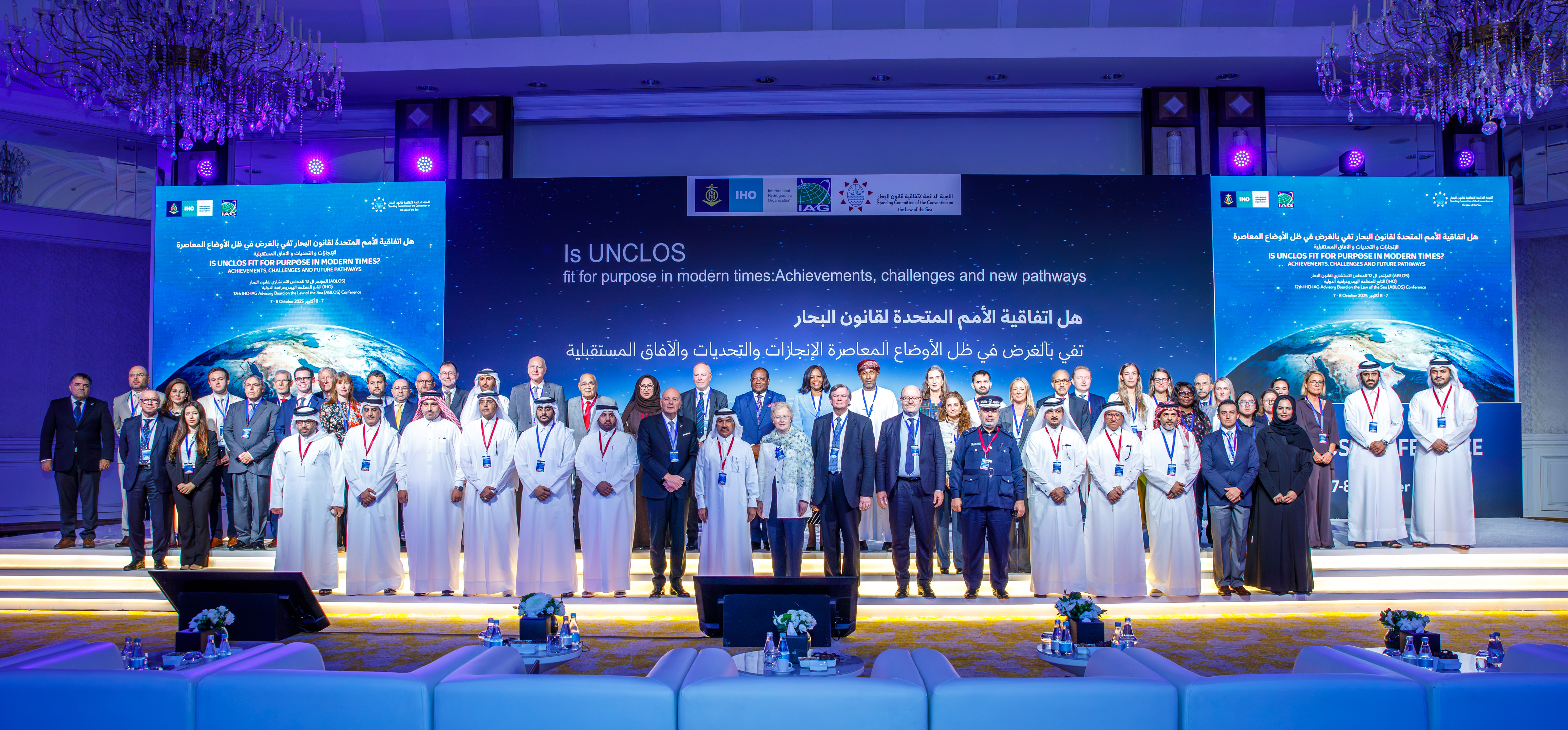
"The ocean is vital for societies. We should change the name of our planet from Planet Earth to Planet Ocean. The ocean provides huge economic opportunities and holds all the resources for sustainable development”.
H.E. Dr. Ahmed Al-Hammadi, Chairperson of the Qatari Standing Committee of the Convention on the Law of the Sea
However, the relationship between our oceans and societies is increasingly under threat. Sea-level rise, pollution, and biodiversity loss are affecting all coastal states, changing maritime limits etc. This highlights the need for concerted action and to ensure regulations cover contemporary ocean activities.
UNCLOS is an international treaty - adopted in 1982 and that came into force in 1994 - that establishes a legal framework for marine and maritime activities. However, it was negotiated before the age of ubiquitous satellite observation, AI, autonomous vehicles, drones and many other technologies that raise new questions about jurisdiction, liabilities and supervision.
New Technologies and Modern-Day Challenges
Instruments such as UNCLOS require years of negotiation and are designed to potentially be in force for decades. Since UNCLOS was first negotiated, there have been many changes, whether it be societal, technological, operational or environmental, which could potentially point to gaps.
For example, historically it was mostly the naval forces who carried out activities in submersibles below the surface of the ocean. However, whether for scientific research, ocean exploration or underwater tourism, there is an increasing number of people underwater. This means traditional search and rescue operations, as outlined in past conventions, no longer correlate to the new reality of escape and rescue from the water column. Further, the lack of legal frameworks for some ocean observation, subsea infrastructures, autonomous technologies, and maritime cybersecurity, are some of the gaps highlighted during the conference.
Climate change and sea level rise are also creating new challenges, potentially threatening States’ maritime territories.
“UNCLOS establishes the low-water mark as the baseline from which the breadth of the territorial sea is measured. This line may change due to natural phenomena, and therefore has always been interpreted as being ambulatory, that is, a line that may change with time. However, with sea level rise, costal States will lose land to the sea. This would shift both the baseline and outer limits inwards towards land, effectively reducing the maritime territory of States.”
Dr. Ilaria Tani, University of Milano-Bicocca
As a result, in July 2025, the International Court of Justice Advisory Opinion stated that States could “fix” their baselines to protect their sovereign rights and jurisdiction as they extend at present, notwithstanding the subsequent rise of waters and any changes to the low water mark.
Many speakers in the conference emphasized the flexibility of UNCLOS, which provides a framework with specific tools that can be adopted to address gaps.
“The Convention provides States with a general legal framework that can evolve as new issues arise — from maritime zone delimitation, supported by IHO standards, to the growing challenges posed by climate change, sea level rise and the resulting shifts in baselines.”
Mrs Alice Hicuburundi, Principal legal Advisor of the UN DOALOS/OLA
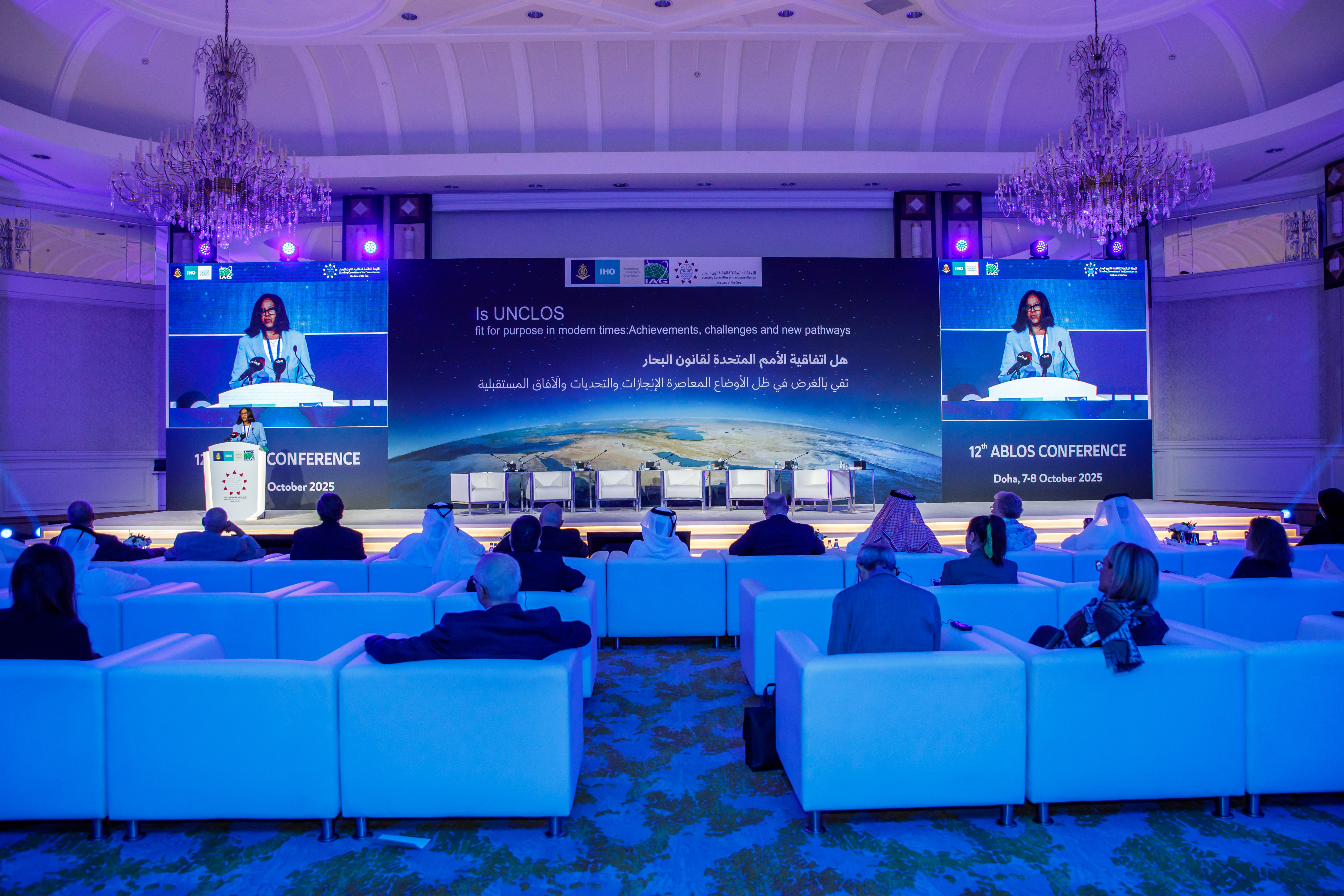
What is the role of hydrography and the IHO in the Law of the Sea?
The work of the IHO, particularly regarding the standardization of hydrographic data and the provision of official nautical charts, presents clear information on maritime limits and boundaries.
With the upcoming implementation of the S-100 framework, ocean data users will be able to access multiple layers of information within a single ecosystem. Among these, the S-121 specification will provide clear maritime limits and boundaries, supporting Law of the Sea submissions regarding the extended continental shelf beyond 200 nautical miles.
About ABLOS
The Advisory Board on the Law of the Sea (ABLOS) is a joint advisory body established by the International Hydrographic Organization (IHO) and the International Association of Geodesy (IAG). This multidisciplinary Board brings together experts in science and policy. Its primary role is to provide advice, guidance, and interpretation on hydrographic, geodetic, and other technical aspects of UNCLOS to its parent organizations, their Member States, and other relevant bodies upon request.
“ABLOS is unique in bringing together hydrographers, geodesists, lawyers, academics and other ocean-stakeholders to ensure that legal provisions under UNCLOS are informed by sound technical interpretation. By uniting science, law, and policy, and by engaging in open dialogue, ABLOS continues to serve as a beacon for the international community.”
Luigi Sinapi, Director of the International Hydrographic Organization
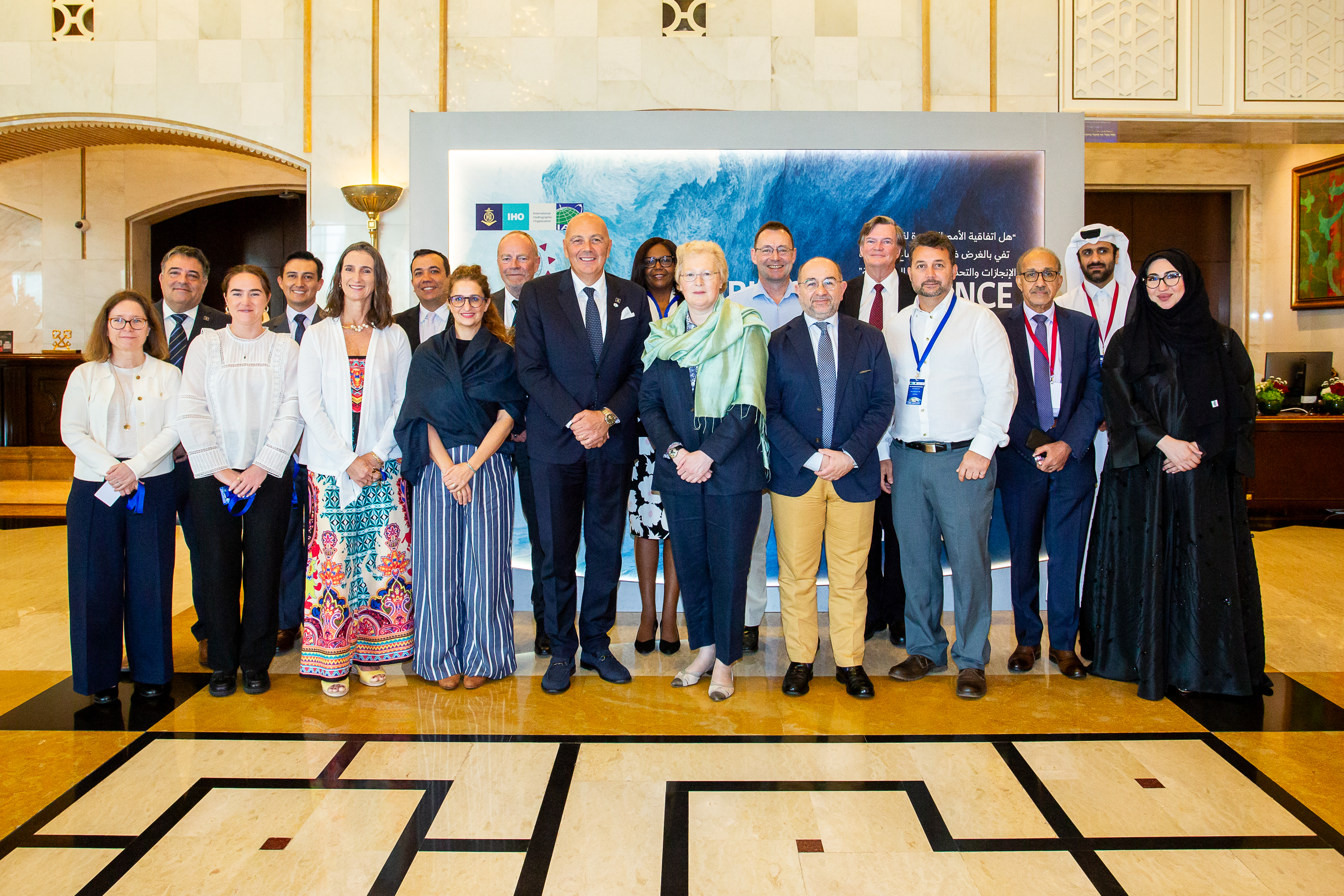
The 12th IHO-IAG ABLOS Conference was the first-ever to be held outside Monaco and saw good participation from the Gulf Coast Countries. The business meeting and conference were coordinated by the ABLOS organizing committee, with support from the IHO Secretariat, and hosted by the Qatari Standing Committee of the Convention on the Law of the Sea.
The IHO Delegation included IHO Director Luigi Sinapi, IHO Assistant Director Leonel Manteigas as ABLOS Secretary, and Public Relations & Communications Officer Sarah Jones-Couture.
For more information, please contact info@iho.int.
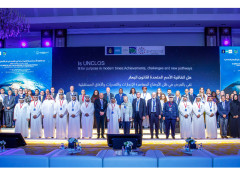
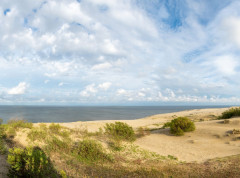


Share this page: